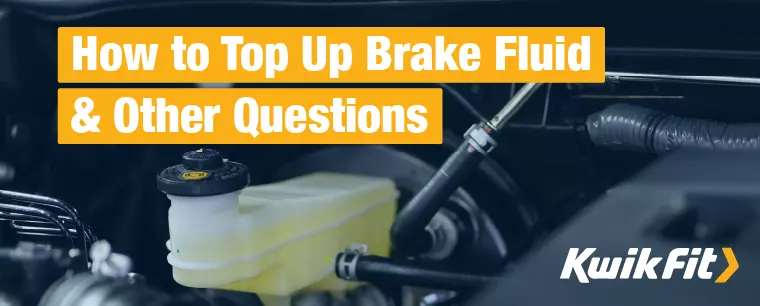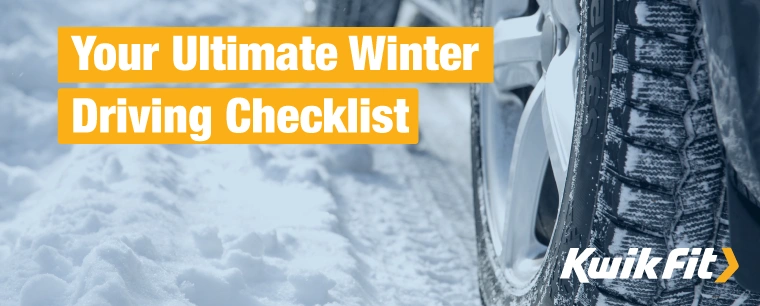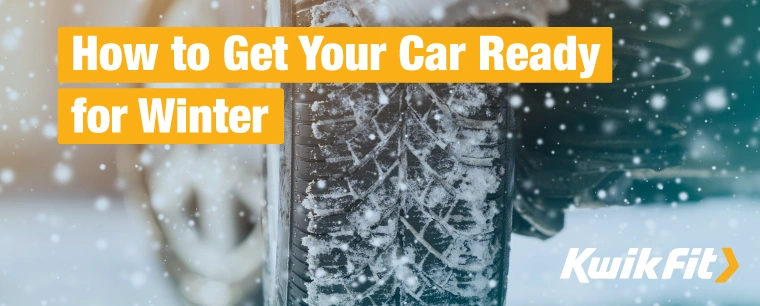How to Top Up Brake Fluid & Other Questions
Jack Dreyer | Friday 1st September 2023 9:00am

As its name suggests, brake fluid is an essential part of modern car braking systems (and by ‘modern’ we mean any car in the last half century at least). Without an adequate amount of fluid, the hydraulic brakes won’t work as effectively, and can even stop functioning altogether.
The specifics of how brakes work changes based on the individual car’s design, but the basic premise is that hydraulic fluid is compressed when you press down the brake pedal. This compression, in turn, causes the brake pads (or drums) to compress against the brake discs.
As well as keeping your brakes functioning, brake fluid is also a lubricant with anti-corrosive properties, so it helps keep your braking system healthy overall.
If you’ve never topped up your brake fluid before, it can feel like an alien task but, luckily, it’s actually fairly easy to do. In this blog, we’re going to run you through everything you need to know about brake fluid, starting with how to top it up.
How to top up brake fluid
1. Locate your master cylinder
You can find your master cylinder by reading your vehicle handbook. It’ll usually be located under the bonnet, on the driver’s side of the vehicle – towards the back of the engine compartment.
You’ll see a metal cylinder with a plastic container on top – this is the brake fluid reservoir.
In most cases, the cap itself will indicate you’re in the right place, inscribed with ‘brake fluid’. There’ll be a full line and a minimum line and, in modern cars, you should be able to see the fluid level from the outside.
It’s important to note here that if you’re not parked on a flat surface then your reading probably won’t be accurate!
2. Make sure you buy the right brake fluid for your car
The cap of the brake fluid reservoir will usually tell you what kind of brake fluid you should use - DOT3, DOT4, or DOT5.
If you can’t find it here, you can also look it up in your vehicle handbook.
There are premium brake fluids available with additional additives and oils but, unless you are driving your car on the track, fresh fluid changed every two years is all you really require to keep your system running at optimum levels.
Brake fluid has just a two-year lifespan unopened, so bear this in mind when you purchase and as a general rule, don’t buy in bulk.
3. Pour in the brake fluid
This is the easiest part! Simply open the cap and pour in the brake fluid until it reaches the ‘maximum’ line. Screw the cap back on securely, shut your bonnet, and you’re ready to go (or stop!).

4. Maintain your brake fluid
Considering brake fluid is such a vital component within your braking system, you should ideally check the levels every week.
If you notice that the levels get low again pretty soon after topping up, you might have a leak – in which case, you should book an appointment at your local garage as soon as you can.
The more water that enters your brake fluid, the further diluted it becomes. This then lowers the temperature at which the fluid boils – which can result in your brakes failing to stop your car. As a result, most manufacturers recommend changing out your brake fluid altogether every 2 years. This part is a job for a mechanic!
5. Have your brake fluid changed every 2 years
A brake fluid change (as opposed to a ‘top-up’) involves a process of ‘bleeding’ your brakes to remove the old fluid and make space for the system to be refilled. Bleeding your brakes also gets rid of any bubbles of vapour that may be lodged in them. Specialist equipment is needed to do this properly and without making a big mess.
By far the safest and easiest thing to do is take your car to a trusted technician and get them to carry out this task for you. If you come to Kwik Fit for this service, our technicians will drain the old fluid in your brakes and then refill them with new fluid in line with the correct specifications.
We will also dispose of the old fluid in an environmentally friendly and safe way. In addition, we will test your braking system to ensure it’s safe and record the fluid change in your service book. Book in for a brake fluid change here!
How does brake fluid work?

Brake fluid not only amplifies your car’s braking force but it also acts as a lubricant and prevents corrosion in moving parts of your brakes.
So, as such an important part of your brake system, you might be wondering, “how does brake fluid work?”
The braking system
Brake fluid is part of the braking process from the moment you put your foot down to brake.
When you press down on your brake pedal, the pistons inside the master cylinder (which lives within the engine compartment) compress to allow the brake fluid to travel under pressure. The compression from the pistons increases the pressure within the brake lines which is where the pressurised brake fluid is contained.
The brake lines divert the force of you pushing down on the brake pedal into the front and rear brakes of your car using the pressurised brake fluid.
The brake fluid then converts the energy used to push down the brake pedal into braking pressure that causes the brake pads to squeeze the brake rotors. This leads the rotors to slow down and brings them to a halt.

Why does brake fluid deteriorate?
Brake fluid doesn’t last forever; over time it soaks up water from the hoses, joints, and pipes that it lubricates. As the water content in the fluid rises, the temperature at which it boils falls and, in turn, this can make your braking system less effective.
As water builds up in the hydraulic fluid, your brakes will become less and less responsive, making it harder to slow or stop your car.
You may first notice this as a spongy feeling when you depress the brake pedal. If it gets very bad, your brakes may fail completely. For obvious reasons, this lack of responsiveness can present a real danger when you’re driving, so it’s not something you can afford to ignore.
What should I do if my brake warning light comes on?
If there’s a problem with your brake fluid, the first sign that something’s wrong may be a warning light appearing on your dashboard. For example, the brake warning light can be triggered by a leak of this hydraulic fluid.
If you find that you need to press your brake pedal further down than usual, pull over as soon as you can and call for help. If your brakes seem to be working OK and the level of your brake fluid is normal, the warning light may just be a sensor issue. In this case, you should be able to drive to a garage to have your car looked at.
Kwik Fit’s brake service
Getting regular brake checks is a crucial aspect of vehicle maintenance. It can identify any problems before they start to impact braking efficiency, helping to keep you and other road users safe. If you think it’s time for your brakes to get a once over, why not call into one of our 600 centres located across the country?
Any facts, figures and prices shown in our blog articles are correct at time of publication.
Featured Articles
Is Your Car Battery Ready for Winter?
Monday 11th November 2024
Is the UK on the verge of ‘the coldest winter for 50 years?’ Even if El Niño doesn't hit the UK this winter, reduce the risk of a winter breakdown by making sure your car battery is winter-ready.
Your Ultimate Winter Driving Checklist
Monday 31st October 2022
Driving in the colder months presents many challenges. Breakdowns are far more common in winter, so make sure you’re prepared with these essentials.
How to Get Your Car Ready for Winter
Wednesday 28th September 2022
Winter can be a harsh season for your car but planning ahead by carrying out some basic maintenance and packing some essential kit should help you avoid a winter breakdown.







